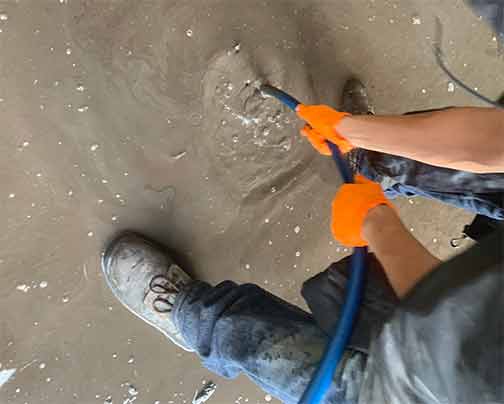
Clogged drains are a common problem in homes; they happen following the day-to-day use of your plumbing system. Ordinarily, Safe House Management company notes that clogs in your drain lines should not be a cause of concern since most drain clogs are avoidable and easy to solve.
Yet, at the same time, drain clogs can cause massive damage to your plumbing and building. Fixing them can also take a huge toll on your finances. But a clogged drain will only cause you big problems if you make the following three mistakes in your home:
- Improper maintenance of the drainage system.
- There are longstanding drainage issues that have been ignored.
- Choose the wrong solution for your clogged drains.
If drain lines are not maintained to make it easy to spot and solve problems quickly, the system will be more vulnerable to severe clogs. Minor drain issues will have more time to grow into major plumbing emergencies.
As a result, your home’s drain issues will not only cost more money to fix, but the risk of pipe damage will be higher. This problem can get worse if you choose the wrong drain cleaning solutions. What are ways to safely clear a clogged drain line in your home?
DIY methods to unclog your home’s drain safely
Use a plunger
A plunger is a simple tool that all homeowners should learn how to use. Plungers use suction force to suck debris out of a blocked drain. Place the plunger over the drain opening in a way that ensures a tight seal between the two surfaces.
The handle is then pumped up and down with quick movements. The vacuum created by this action allows the debris inside the pipe to be pulled out. There are two kinds of plungers – sink and toilet plungers. Never interchange them.
Use a handheld drain snake
This is a handheld device which can be manual or automatic. The snake is inserted into the drain opening until it reaches the location of the clog to clear the affected drain. Twist it gently to push through the blockage or snag the debris.
When pulled from the drain, the wire will pull the attached debris with it. You may repeat this process several times to clear the pipe completely. Manual drain snakes and plungers are only effective if the clog is close to the drain opening.
Use baking soda, vinegar and hot water
To unclog a blocked drain with vinegar and baking soda, pour a half cup of vinegar into the drain, followed by a cup of vinegar. Cover the drain opening and let the mixture fizz for 30 minutes. Flush the drain with hot water.
You can do this with hot water alone. Slowly pour hot water into the drain. Give it time to work its way through the pipes. Repeat this process until the grease and debris inside the pipes melt away. Do not pour boiling water into PVC pipes.
Use borax
Use this natural drain cleaner instead of chemical drain cleaners that can damage your pipes. To clear a clogged drain with this method, pour a solution of one part borax to four parts boiling water down the drain and let it sit for 15 minutes. Flush with hot water.
To unclog a toilet, scoop out as much water from the toilet as you can. Pour a half cup of borax powder into the toilet and let it sit for 15 minutes. Follow this with boiling water. You may need to do this a couple of times to get the desired result.

Hydro jetting uses high-pressure water to blast away the clogs inside the drain line.
Professional drain cleaning methods that will not damage your pipes
The above methods only work for minor drain clogs. For chronic drain clogs or clogs that are deep inside the drainage system, you need a more powerful method. The recommended solutions for these drain clogs are sewer rodding and hydro jetting services.
Sewer rodding
This is a motorized version of the traditional drain snake. Also known as an auger, drain snake, or plumbing snake, rodding machines are several times larger than handheld drain snakes and can remove difficult clogs like sludge and tree roots.
Hydro-jetting
This uses high-pressure water to blast away the clogs inside the drain line. Like a plumber’s snake, hydro jetting will remove sludge and tree roots. But it has the added advantage of washing the debris out of your pipes.
Finally, note that you will not get the best results from any of the above drain cleaning methods if you don’t have an effective drain maintenance strategy. Ideally, this should be a program of preventive maintenance. Preventive maintenance is the best way to care for drains.
That entails a plan for inspecting and cleaning the pipes periodically, whether there are problems or not. That will let you catch problems in their early stages or even eliminate drain clogs. Would you like to know more about preventive drain maintenance for your home?







